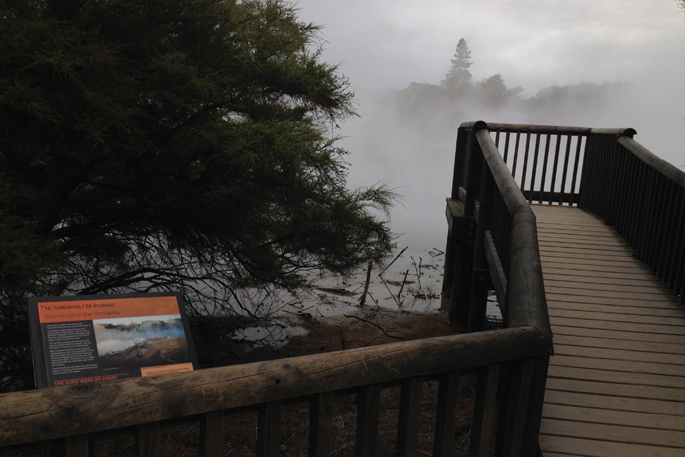Double double toil and trouble / Fire burn and cauldron bubble, Macbeth's three witches said as they stirred their cauldron.
While the Scottish witches chuckled as they tossed around poisoned entrails, an eye of a newt, and the toe of a frog etc, scientists are keen to learn what lies in the cauldron of Rotorua's sub-strata.
Along with the Bay of Plenty Regional Council, GNS Science has been investigating volcanic hazards and deep geothermal energy resources in the Taupo Volcanic Zone for the last decade.
The latest findings are to be shared at a public meeting on February 12.
Since 2009, GNS Science has been collecting magnetotelluric – or MT measurements – to further understand volcanic hazards and the deep geothermal energy resources in the Taupo Volcanic Zone, including Rotorua.
MT measurements help to create a picture of where geothermal fluid may lie deep within the earth – in the case of the Taupo Volcanic Zone, 3-7 kilometres underground, and the underlying magmatic heat sources of the geothermal systems.
Along with GNS Science government research funding, the Bay of Plenty Regional Council contributed to the MT data collection exercise which focused on the area east of Lake Rotorua.
The most recent results from this research will be presented at a meeting, open to the public, at the Bay of Plenty Regional Council Rotorua office, 1125 Arawa St, Rotorua on 12 February, from 5.30 pm.
GNS geophysicists Ted Bertrand says the results of the research were 'extremely interesting”.
'Over the last few years, we have started to see the connection between the shallow parts of geothermal fields and the underlying magmatic systems which provide the heat,” Bertrand says.
'Results from the Rotorua lakes region and similar research north of Taupo have enabled us to start to understand how geothermal systems like Rotorua work from tip to toe – from the surface features down to their volcanic roots.
GNS geophysicists Grant Caldwell says one aim was to provide information to encourage future exploration and research into sustainable geothermal resources at depths greater than currently explored.
Regional council geothermal programme leader Penny Doorman says the work was important.
'Our aim is to increase our understanding of the wider geothermal resource and volcanic hazard in the region surrounding Rotorua.”



0 comments
Leave a Comment
You must be logged in to make a comment.